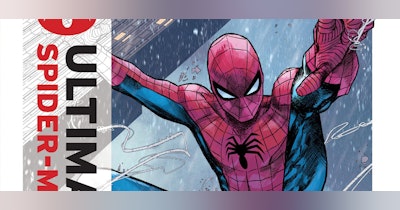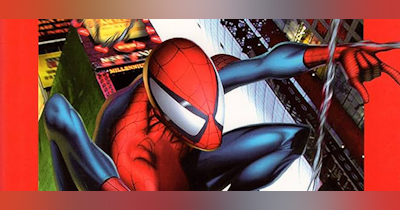In 2015, Marvel launched four separate Star Wars comics (Star Wars, Darth Vader, Princess Leia, and, finally, Kanan the Last Padawan), all to nearly universal acclaim, and, at least until the last one, all set just after the events of the Battle of Yavin and the fall of the Death Star.
Unlike the other three, Kanan the Last Padawan takes place long before A New Hope and instead focuses on the end of the Clone Wars and the birth of the Empire. Following the relatively new character of Caleb Dume, more popularly known as Kanan Jarrus, from both the show Rebels and the novel A New Dawn. Greg Weisman gives us our best look yet at the Last Padawan before abandoning his Jedi heritage and going into hiding.
I'll be honest and let you guys know that I've yet to actually start watching Rebels. In fact, I'm still not finished with The Clone Wars (even though I've gotten far enough to know Ahsoka is one of my favorite characters in the entire franchise). Still, I'm not completely new to the character of Kanan Jarrus. I've been reading A New Dawn by John Jackson Miller and I actually have been having trouble putting it down. For anyone who likes Star Wars and doesn't mind reading a novel set in the universe, I highly recommend checking it out. We get to see a pretty damn good look at the character and how the Empire has progressed since the end of the Clone Wars (something I've been very interested in seeing).

At the start of the issue Jedi master Depa Billaba leads a battalion of clone troopers against the Separatist Droids with young Caleb learning and battling next to her. The entire scene is beautifully illustrated by Pepe Larraz, who continues to amaze throughout the issue, and colored to perfection by David Curiel. Even if you're not a Star Wars fan, this issue is almost a must buy for the art alone. Rather than try to match the style of any of the other comics or TV shows, Larraz and Curiel instead focus on giving a fluid and vibrant story from start to finish.
Not to say anything bad about Pepe Larraz, but I was amazed at the coloring more than anything in this book. I mean, just look at this:

Similarly, Weisman crafted a plot that flows from one scene to the next, never feeling boring or out of place. That is, except for the very first page, in which we are given a look at the crew of the Ghost for a handful of panels before launching into a flashback for the remainder of the issue, leaving us to question the point other than connecting it directly to the Rebels show. The rest, however, shines as an intelligent look into war and the characters' relationships to each other and the world around them.

This is a Kanan that's not only different in name, but almost a completely new character, one that's not yet scarred by what we know is to come. Caleb (Kanan) is bright, inquisitive, and eager to accept his role with the Jedi, specifically next to his master, Billaba, who reveals to her padawan that she questions the judgement of the Jedi Council.
Weisman also does an amazing job here by making sure we get how momentous that is. Jedi were allowed to disagree, but it wasn't often that they questioned command the way Depa Billaba did. It's equally important to see how she guided Caleb (Kanan) through his feelings, stopping only to let him know that attachment can be a very dangerous thing for Jedi.
Also, were you aware that Depa Billaba was actually in The Phantom Menace and Attack of the Clones?

We get a great opportunity here to see how much the war has changed both Caleb and the galaxy itself when the clones, the Jedi, the victims of the Separatists, and Kanan all give distinct views on the role of both the Jedi and the Galactic Republic.
If there was anything missing from The Clone Wars, it was this. So much of the war was painted as good guys versus bad guys with almost none of the actual moral grays being explored. The Republic claims that they're fighting for peace, but, even still, they make questionable decisions all throughout. What even caused the war to begin with? The Separatists wanted to secede. Okay. I think everyone in the Republic agreed that they could. So they plan to secede and then begin a fight? What are the Separatists fighting for? I get the Republic needed an army because the Separatists had the droids, but what the hell did they have the droids for? Were they going to take the capital? If so, why? The cartoon went out of their way to show that the Separatists weren't terrible people and firmly believe in their cause and the war. But WHY?

By the end of the issue it's almost heartbreaking to see Palpatine commanding the clone troopers to carry out Order 66, the death sentence for all Jedi, if for no reason more than how likable and entertaining Billaba and Caleb are together. The coming issues are sure to take a dark turn, but one that will hopefully illuminate more of how Kanan came to be. The Last Padawan is definitely worth adding to your pull list, but be careful! By the end you'll be craving for an ongoing series.



